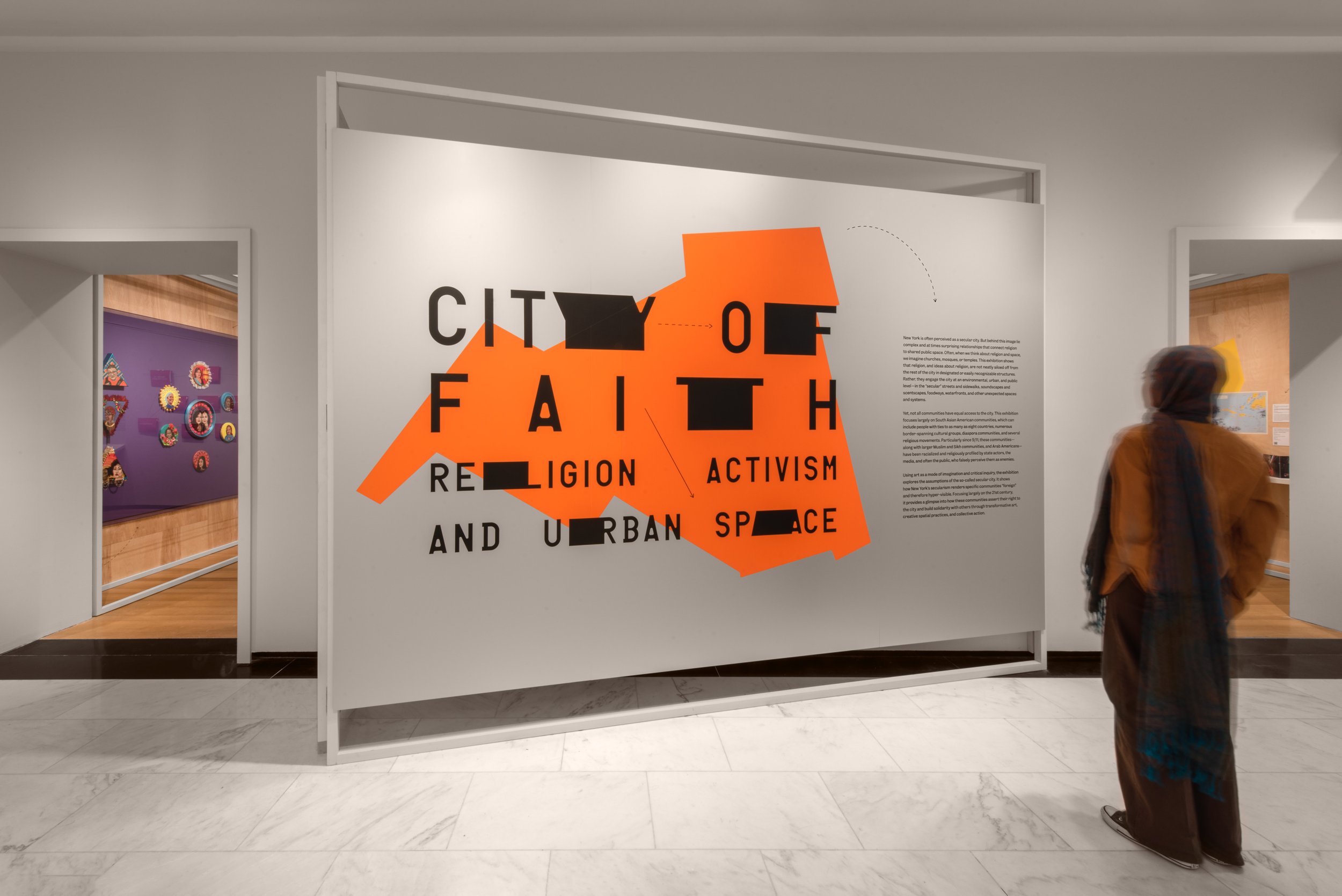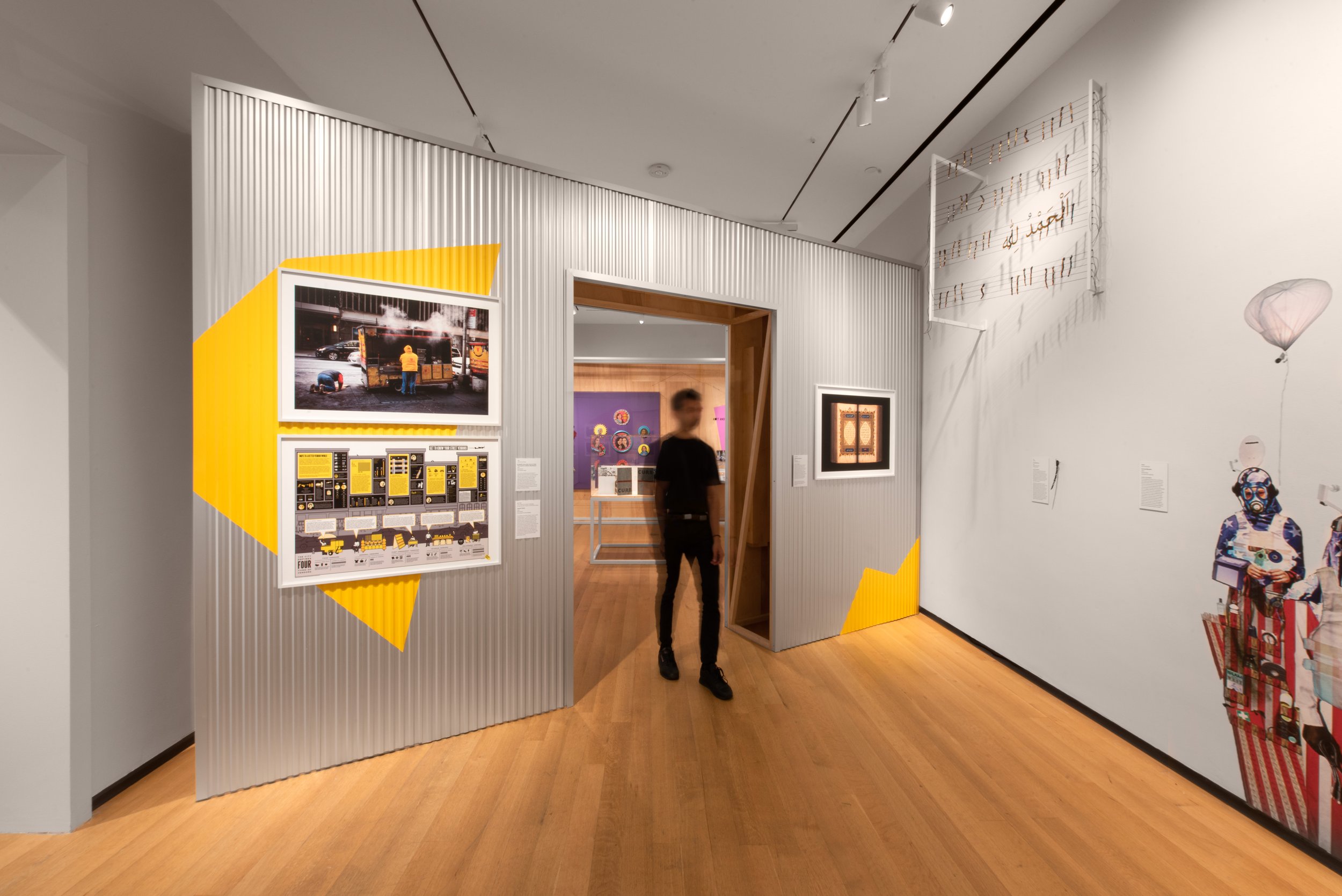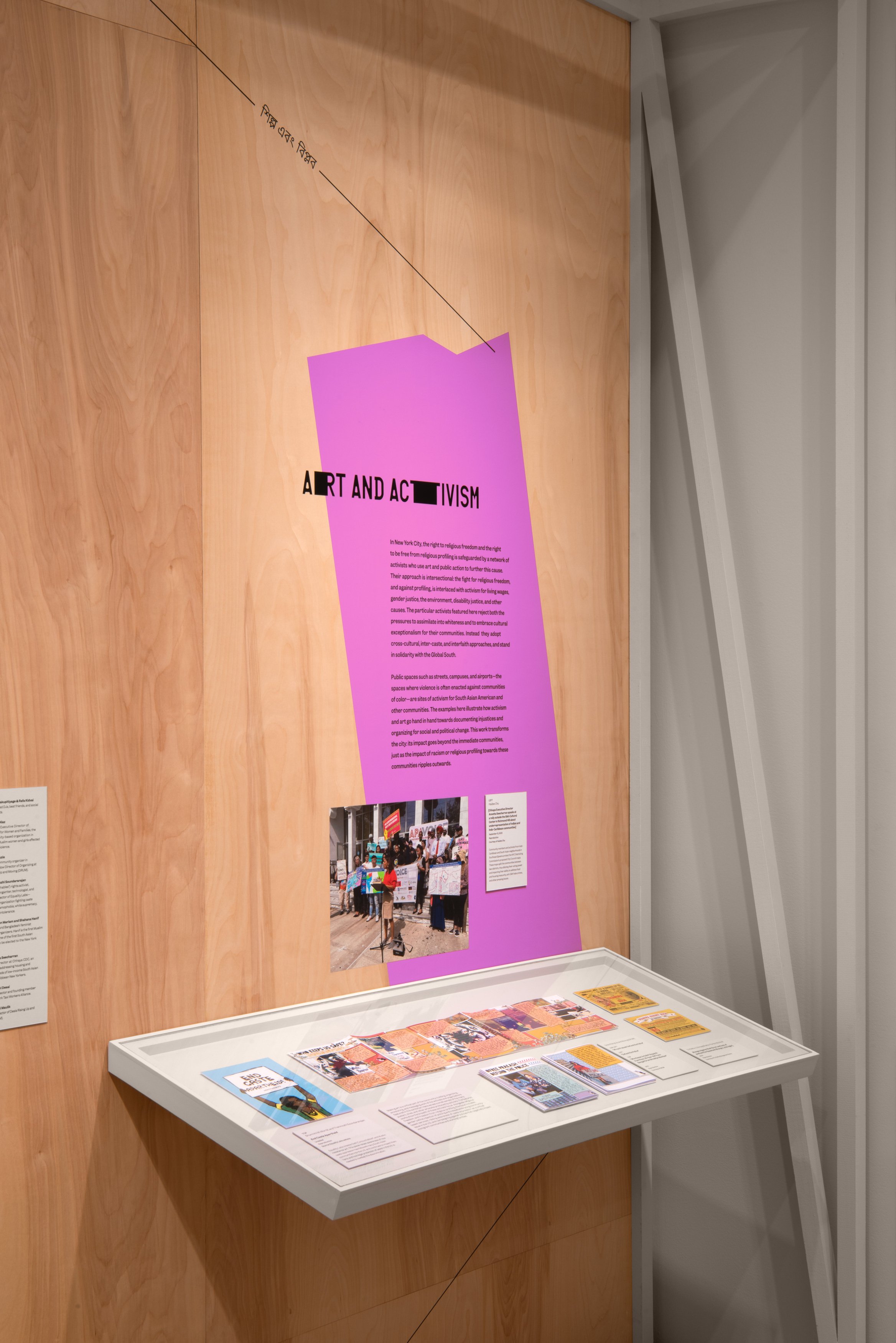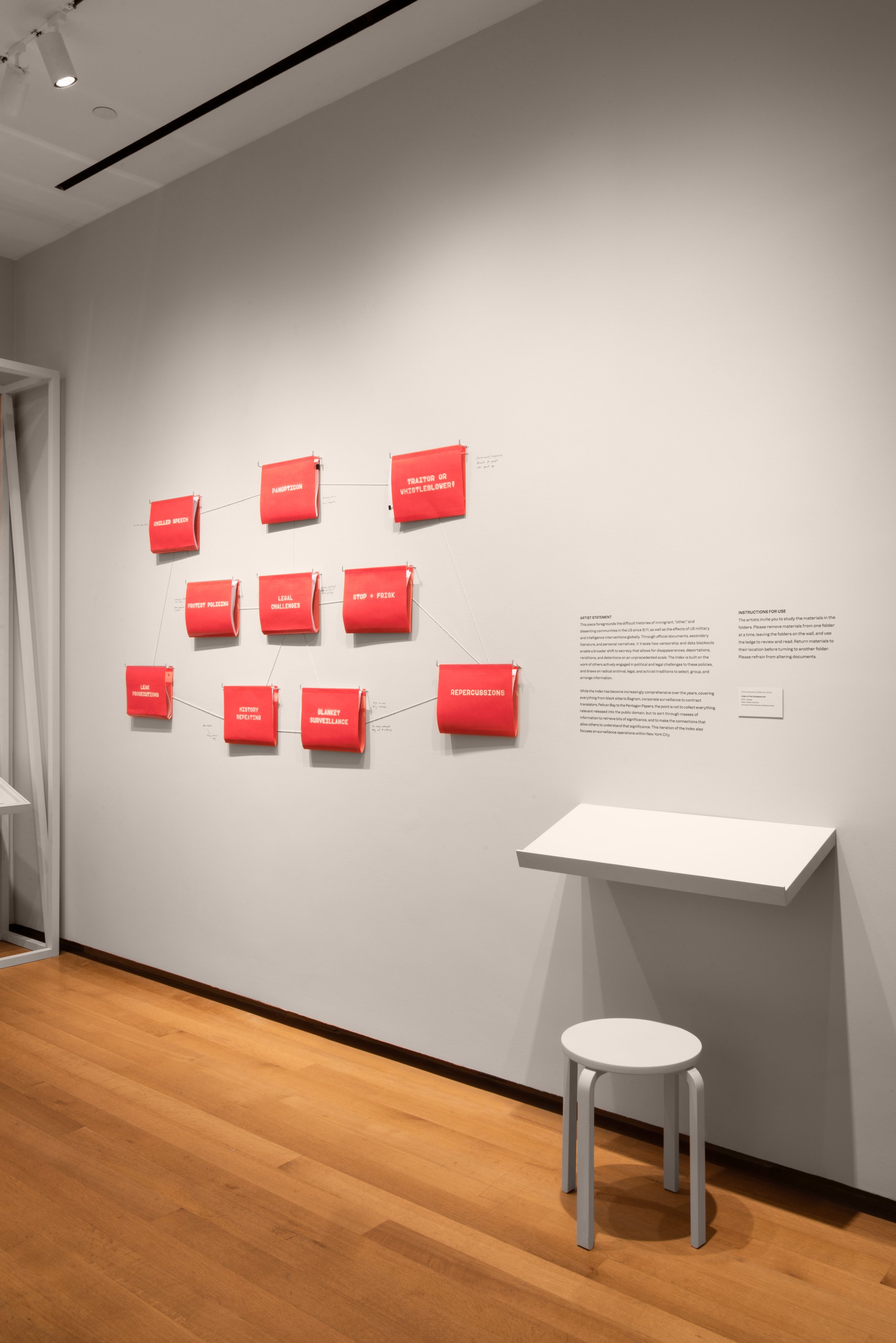City of Faith: Religion, Activism, and Urban Space
Visual Identity, Exhibition, Architecture
Exhibition examining South Asian religious communities and their entwinement with public spaces in New York City
Amplifying the voices of religious minorities
Isometric collaborated with the Museum of the City of New York on Mellon Curatorial Fellow Azra Dawood’s capstone exhibition City of Faith: Religion, Activism, and Urban Space. Through historical analysis, commissioned artworks, and visualizations of activist networks, the exhibition uplifts the stories of South Asian communities in New York City that have long endured religious profiling, surveillance, and scapegoating. Corrugated metal and exposed plywood structures frame images and artwork as everyday, street-level expressions of faith—abstracted and elevated to the dignity of a museum exhibition. Bold, colorful shapes and emphatic titles focus visitors on the curatorial text, while subtle linework and arrows connect concepts across the gallery walls. What results is an effusive and starkly contemporary expression of religious difference and coexistence that challenges the image of New York as a “godless” city, reframing it as a home that minorities strive daily to make their own.
Exhibition fabrication and installation by South Side Design and Building.
Honoring trauma, survival, and grace
After 9/11, South Asian and Arab communities were conflated and vilified by the right-wing media and leaders as “radical Islamic terrorists,” a characterization that wrought violent consequences for Muslim and Sikh people whose physical appearance and religious dress rendered them hypervisible, subjecting them to hate crimes. The curatorial strategy and exhibition design hold Islamophobia and white supremacism accountable, making visible the way South Asians have mourned, survived, and stood up to repeated indignities and violence over decades. The exhibition also demonstrates how these communities have responded with expressions of grace, resilience, and solidarity—hosting interfaith gatherings on Brooklyn’s Avenue C Plaza, fighting for debt relief for taxi workers, and serving food to protestors during the 2020 Black Lives Matter uprising.

Taking up space with multilingual typography
The exhibition explores how individuals and organizations from minority religious backgrounds take up space in New York City’s congested urbanism, often with ad-hoc expressions of their own identities. The exhibition typography is inspired by vernacular storefront signage in immigrant neighborhoods like Jackson Heights and Flatbush, its letterforms elongated as a metaphor for making space. Multilingual typography stretches ecstatically across the museum walls, forming an annotative language that incorporates Urdu, Bangla, Arabic, and Hindi scripts.



















